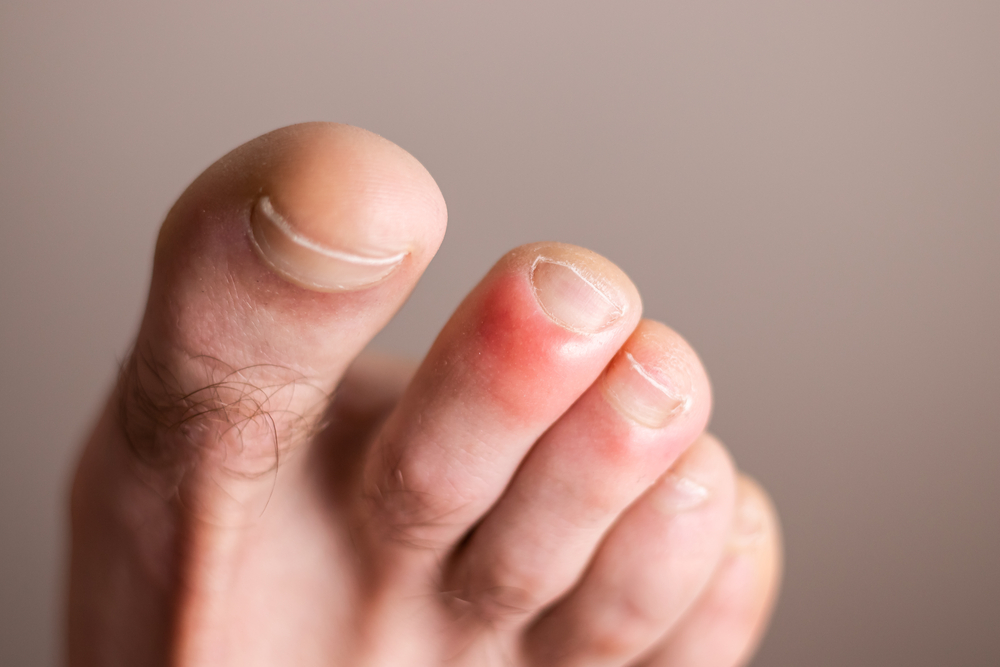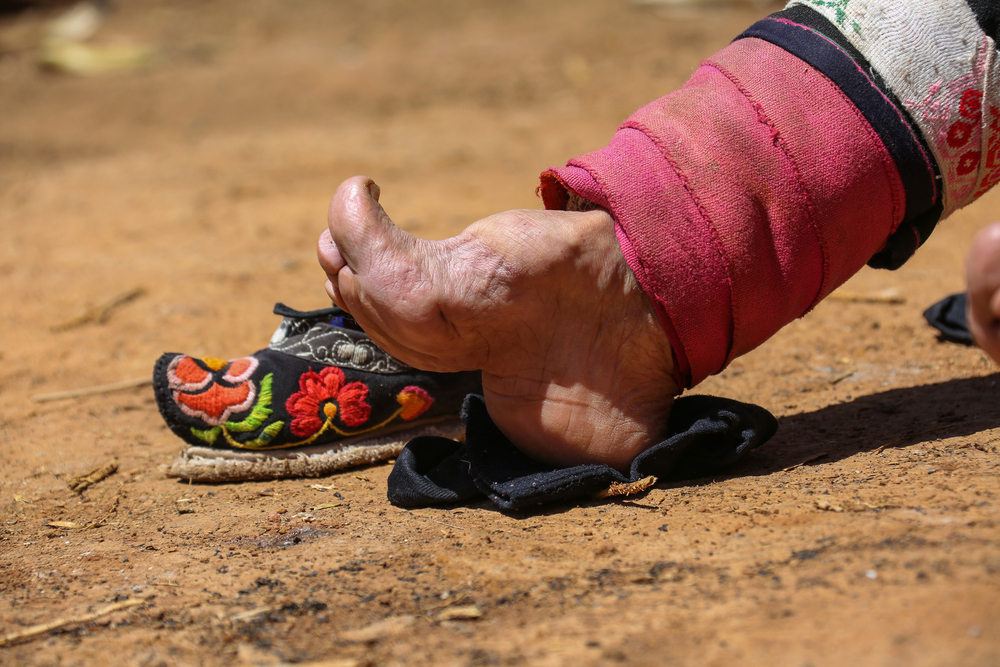Erosio Interdigitalis Blastomycetica is a dermatological condition characterized by inflammation and erosion of the skin in the spaces between the toes or fingers. This skin issue is often linked to fungal infections, particularly those caused by Candida species. Understanding Erosio Interdigitalis Blastomycetica is important for dermatological health because it can lead to discomfort and complications if left untreated.
The primary causes of this condition are often associated with fungal infections, which thrive in warm and moist environments. Factors such as high humidity and inadequate hygiene can significantly increase the risk of developing this condition. For example, Schlager et al. (2018) discuss how interdigital candidiasis can occur in people who frequently experience skin-to-skin contact or who do not dry their skin properly after bathing. The presence of moisture can create an ideal setting for fungi to grow, making individuals more susceptible to infections.
In addition to humidity, other environmental triggers also play a role in the development of Erosio Interdigitalis Blastomycetica. Reich et al. (2016) provide insights into the incidence and impact of fungal infections within the broader context of dermatological health. Their research shows that certain lifestyle factors, such as wearing tight-fitting shoes or socks that do not allow proper airflow, can worsen conditions that lead to fungal infections. Such footwear can trap moisture and heat, further promoting fungal growth.
Another important aspect to consider is the skin type and individual susceptibility. Kutlubay et al. (2017) highlight acral manifestations of fungal infections, showing that people with certain skin conditions or those who have compromised immune systems can be more prone to developing Erosio Interdigitalis Blastomycetica. This information emphasizes the need for awareness of personal risk factors and the importance of maintaining proper hygiene, especially for those in high-risk groups.
Moreover, Metin et al. (2018) focus on recurrent candidal intertrigo as an example of fungal infection impacting dermatological health. Their findings suggest that recurrent episodes can lead to chronic skin issues if not addressed properly. It’s crucial to identify the infection early and apply suitable treatments to avoid further complications that could stem from ongoing fungal activity.
Understanding the causes of Erosio Interdigitalis Blastomycetica is essential for effectively managing and preventing this condition. By recognizing how factors such as humidity, inadequate hygiene, and individual susceptibility contribute to the development of fungal infections, healthcare providers can better educate patients on preventive measures and timely interventions. The insights gained from the literature underscore the significance of maintaining clean, dry skin in preventing this condition and improving overall dermatological health., Erosio Interdigitalis Blastomycetica is a skin condition that primarily affects the areas between the toes, leading to various symptoms that are uncomfortable and distressing. Common symptoms include itching, erythema (redness), and burning sensations in the affected areas. According to Wollina et al. (2022), these symptoms are typical presentations of fungal infections, which can disrupt normal skin function and lead to secondary infections if not treated promptly. The itching can be particularly severe, causing individuals to scratch and potentially worsen the condition.
Diagnosing Erosio Interdigitalis Blastomycetica can be challenging. Health professionals often face difficulties in identifying the condition, especially during health crises, as noted by Patil et al. (2023). The overlap of symptoms with other skin disorders can lead to misdiagnosis or delayed diagnosis. Thus, a thorough clinical evaluation is essential to distinguish this condition from similar disorders, such as dermatitis or psoriasis. Importantly, clinicians must also consider the role of underlying factors like diabetes or immunosuppression that may exacerbate fungal infections.
One crucial aspect of diagnosis is antifungal susceptibility testing, which helps determine the right treatment plan for the patient. Hassan et al. (2018) emphasize the importance of this testing, as it informs healthcare providers about which antifungal medications will be most effective against the specific strain of the fungus causing the infection. This step is vital in avoiding ineffective treatments and ensuring that patients receive timely care.
When it comes to treatment options for Erosio Interdigitalis Blastomycetica, both topical and systemic antifungal medications are available. Topical treatments may include creams and ointments that can be directly applied to the affected areas, providing targeted relief. Systemic antifungals, which are taken orally, may be necessary for more severe cases or recurrent infections. Regular dermatological evaluations are crucial for monitoring the progress of treatment and making any necessary adjustments. Abrahams and Elgart (2019) stress that ongoing skin assessments can help manage these infections effectively, ensuring that patients do not suffer from prolonged discomfort.
In addition to the treatments mentioned, understanding the factors related to dissemination and infection spread is essential. Insights from Turda and Mohammed (2016) highlight how heat-related disseminated candidiasis can complicate the clinical picture of Erosio Interdigitalis Blastomycetica. High temperatures and moisture can create an environment where fungi thrive, leading to more severe and widespread infections. This understanding is vital as it emphasizes the need for comprehensive management strategies that address not only the localized symptoms but also the contributing environmental factors surrounding the patient’s condition.
Through examining symptoms, navigating diagnostic challenges, and implementing effective treatment plans, healthcare providers can better support individuals affected by Erosio Interdigitalis Blastomycetica. The implications of this condition extend into broader clinical considerations, where understanding fungus-related infections is crucial for improving dermatological health outcomes.
Citations:
Schlager, E., Ashack, K. and Khachemoune, A., 2018. Erosio interdigitalis blastomycetica: A review of interdigital candidiasis. Dermatology Online Journal, 24(8). https://escholarship.org/uc/item/8tm443f6
Reich, D., Psomadakis, C.E. and Buka, B., 2016. Interdigital Candidiasis. In Top 50 Dermatology Case Studies for Primary Care (pp. 67-72). Cham: Springer International Publishing. https://link.springer.com/chapter/10.1007/978-3-319-18627-6_11
Patil, D., Shivaswamy, K.N., Reddy, N.S. and Sumathy, T.K., 2023. Topical steroid menace: A case series of severe debilitating infections during the COVID-19 pandemic. Our Dermatology Online/Nasza Dermatologia Online, 14(1). https://www.odermatol.com/odermatology/20231/10.Topical-PatilD.pdf
Wollina, U., Nenoff, P., Verma, S. and Hipler, U.C., 2022. Fungal infections. In Roxburgh’s Common Skin Diseases (pp. 81-90). CRC Press. https://www.taylorfrancis.com/chapters/edit/10.1201/9781003105268-8/fungal-infections-uwe-wollina-pietro-nenoff-shyam-verma-uta-christina-hipler
Kutlubay, Z., Yardımcı, G., Kantarcıoğlu, A.S. and Serdaroğlu, S., 2017. Acral manifestations of fungal infections. Clinics in dermatology, 35(1), pp.28-39. https://www.sciencedirect.com/science/article/pii/S0738081X16302243
Metin, A., Dilek, N. and Bilgili, S.G., 2018. Recurrent candidal intertrigo: challenges and solutions. Clinical, cosmetic and investigational dermatology, pp.175-185. https://www.tandfonline.com/doi/abs/10.2147/CCID.S127841
Turda, C. and Mohammed, E.A., 2016. HEAT RELATED DISSEMINATED CANDIDIASIS. CASE REPORT. Analele Universitatii din Oradea, Fascicula Ecotoxicologie, Zootehnie si Tehnologii în Industria Alimentara. https://search.ebscohost.com/login.aspx?direct=true&profile=ehost&scope=site&authtype=crawler&jrnl=15834301&AN=120312674&h=iipd0QEziolQFeKT%2FPRTQqyK74D1X310A7xMohFPp7r7JYqLnbH28XK9AXHQXEpOlwGqKHqCjM1w52klXeq2iw%3D%3D&crl=c
Abrahams, J. and Elgart, G.W., 2019. FUNGAL INFECTION IN THE SKIN Fungi are single-celled organisms which divide by fis-sion and are part of their own taxonomic kingdom. These organisms are ancient and are responsible for many human diseases. The unique niche of the skin allows for skin-specific infections, and every dermatologist should be comfortable evaluating patients with skin fungal infec-tion and conversant in the subtleties of their care. The clinical presentation of fungal infection is dependent upon. Moschella and Hurley’s Dermatology, 1, p.1215. https://books.google.com/books?hl=en&lr=&id=SbbZDwAAQBAJ&oi=fnd&pg=PA1215&dq=Erosio+Interdigitalis+Blastomycetica+causes,+symptoms,+and+treatment+options&ots=yIjupW5w0I&sig=iSDSfkbGHDu0NjSPnQIiSByJzVY
Constanta, T. and Ansaf, M.E., 2016. Heat related disseminated candidiasis. Case report. http://protmed.uoradea.ro/facultate/publicatii/ecotox_zooteh_ind_alim/2016B/varia/Turda_Constanta.pdf
Hassan, Y., Abdullahi, S.A. and Than, L.T.L., 2018. Candida albicans interdigital foot infection: A case report highlighting the importance of antifungal susceptibility testing. African Journal of Microbiology Research, 12(36), pp.889-896. https://academicjournals.org/journal/AJMR/article-full-text/08A8F5958959
University lecturer, runner, cynic, researcher, skeptic, forum admin, woo basher, clinician, rabble-rouser, blogger, dad.


